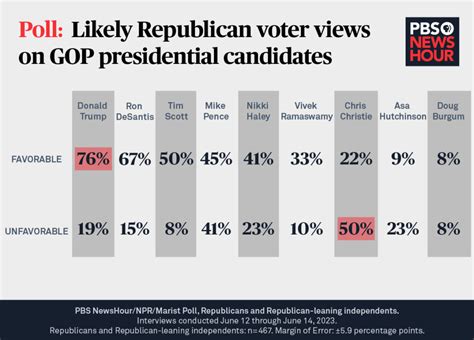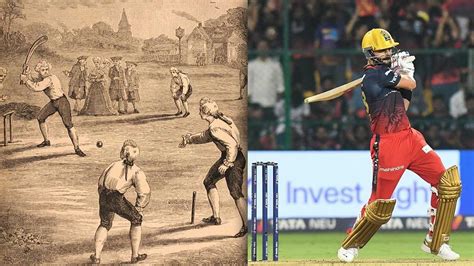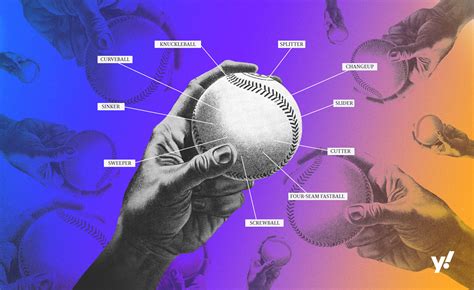Explore the evolution, key players, and social media strategies in baseball sports marketing, highlighting fan engagement and campaign impact for success.Baseball isn’t just America’s pastime; it’s a powerful catalyst for innovation in sports marketing strategies. With its storied history and passionate fanbase, the sport has continually shaped how brands connect with audiences, evolving marketing techniques that resonate across demographics. From leveraging legendary player endorsements to harnessing the potential of social media, baseball serves as a critical case study in effective sports marketing. In this article, we will explore the evolution of baseball marketing techniques, the key players who have significantly influenced these strategies, and the vital role fan engagement plays in driving success. Join us as we delve into how baseball has not only defined marketing trends but also established measurable impacts through creative campaigns that resonate well beyond the ballpark.
The Evolution of Baseball Sports Marketing Techniques
The world of Baseball sports marketing has undergone significant transformations over the years, adapting to changes in audience engagement, technology, and cultural trends. In the early days, marketing primarily revolved around in-person promotions and word-of-mouth strategies. However, as the sport grew, so did the recognition of marketing’s importance in developing fan bases and enhancing team identities.
With the advent of television in the mid-20th century, baseball teams began to capitalize on broadcast rights, allowing them to reach wider audiences than ever before. This marked the beginning of a new era where regional sports networks started showcasing games, turning players into household names and enabling franchises to cultivate a more robust fan experience.
As we moved into the digital age in the late 1990s and early 2000s, the focus of Baseball sports marketing shifted towards online platforms. Teams established their own websites and began engaging fans through email newsletters and online ticket sales, providing convenience and accessibility. This also opened up new revenue streams through merchandise sales and online promotions.
Social media, which emerged in the 2000s, further revolutionized the marketing landscape. Platforms like Facebook, Twitter, and Instagram allowed teams and players to interact directly with fans, fostering a sense of community and loyalty. Teams strategically use social media campaigns to boost engagement, share behind-the-scenes content, and promote events, creating a two-way dialogue that enhances the fan experience.
Today, Baseball sports marketing continues to evolve, with analytics playing a crucial role in shaping strategies. Teams analyze fan data and behavior to tailor marketing efforts effectively, ensuring they resonate with target audiences. Furthermore, partnerships with influencers, embracing eSports, and utilizing augmented reality experiences are becoming common practices within baseball marketing, showcasing a commitment to innovation and relevance.
As we look towards the future, it is evident that the evolution of marketing techniques within baseball will keep pace with technological advancements and changing consumer behaviors. Understanding this trajectory is crucial for teams and franchises looking to maximize engagement and maintain competitive advantages in a rapidly shifting landscape.
Key Players That Shaped Baseball Marketing Strategies
Throughout the history of baseball sports marketing, several key players have emerged, influencing not only the perception of the game but also the marketing techniques used to promote it. These individuals, from players to executives, have crafted innovative strategies that resonate with fans and contribute to the sport’s growth and popularity.
One of the most notable figures is Babe Ruth, whose larger-than-life persona and exceptional talent transcended the game itself. His endorsement deals and merchandise sales significantly impacted how baseball was marketed, setting a precedent for future athletes. Ruth’s ability to connect with the public turned him into a marketing icon, demonstrating the potential that personal branding holds in baseball sports marketing.
Another significant figure is Ken Griffey Jr., who became a household name in the 90s. His approach to marketing included a focus on youth engagement, as he embodied a fun and approachable image. Griffey’s use of the ‘swoosh’ during gameplay fostered a generation of young fans, and his endorsements helped establish a new marketing paradigm within the sports world, linking celebrity status with authentic fan connection.
In the realm of executives, Peter Ueberroth stands out as a transformative leader for baseball marketing. His role as the commissioner during the 1984 Los Angeles Olympics showcased the power of cross-promotional partnerships. Ueberroth’s focus on enhancing the fan experience, from ticket sales to stadium amenities, laid the groundwork for modern marketing strategies in the sports industry.
Moreover, the rise of digital marketing has seen key players like MLB Advanced Media play an instrumental role. This platform revolutionized how baseball engages with its audience by offering online streaming services and interactive content. This shift towards a digital focus has reshaped baseball sports marketing, making it more accessible and engaging for a global audience.
Overall, the key players who have shaped baseball sports marketing strategies have created a lasting legacy. Their innovative approaches have not only promoted the sport but have also evolved the landscape of sports marketing as a whole, inspiring future generations to continue pushing the boundaries of what is possible in this competitive arena.
Leveraging Social Media in Baseball Sports Marketing
In today’s digital age, leveraging social media has become a cornerstone of baseball sports marketing. Teams and organizations are increasingly recognizing the potential of platforms like Twitter, Facebook, Instagram, and TikTok to engage with fans, promote events, and build brand loyalty.
One of the most effective strategies has been the use of targeted content tailored to specific audiences. By analyzing fan demographics and behavior, baseball marketers can create personalized campaigns that resonate with different segments of their fanbase. For instance, using interactive polls and quizzes on Instagram Stories not only boosts engagement but also allows teams to gather valuable insights about their fans’ preferences.
Moreover, the power of video content cannot be overstated. Short clips showcasing behind-the-scenes action, player highlights, or fan interactions often go viral, generating organic reach and driving conversation around the team. Such content not only enhances visibility but also contributes to a vibrant community where fans feel connected to the players and the game.
Another critical aspect of leveraging social media in baseball sports marketing is influencer partnerships. By collaborating with popular personalities, both from the sports world and beyond, teams can expand their outreach and tap into new audiences. These influencers help to humanize the brand and create a more relatable image, which is essential in cultivating a loyal fanbase.
Using social media strategically allows baseball marketers to connect with fans on a deeper level, driving engagement and cementing the sport’s presence in today’s competitive marketing landscape.
How Fan Engagement Drives Baseball Sports Marketing Success
In the world of baseball sports marketing, fan engagement is more than just a buzzword; it is a critical component that fuels the success of marketing campaigns. Engaging fans goes beyond selling tickets and merchandise; it encompasses building a community around the sport, fostering loyalty, and enhancing the overall fan experience.
One of the primary ways to engage fans is through interactive content—be it polls, quizzes, or live Q&A sessions with players. These initiatives create a sense of connection, making fans feel valued and involved. By utilizing their voices in the marketing process, teams can enhance the emotional connection fans have with the franchise.
Social media platforms play a vital role in facilitating this engagement. Teams leverage channels like Twitter, Instagram, and TikTok to share behind-the-scenes content and create real-time interactions during games. By encouraging fans to share their experiences, thoughts, and even criticisms, teams can create a more inclusive and dynamic environment.
Moreover, community outreach programs and special events foster a deeper bond between teams and their local fan base. Initiatives that involve player appearances, charity events, or youth camps not only promote the team but also demonstrate a commitment to the community, further solidifying fan loyalty.
The integration of fan engagement strategies into baseball sports marketing translates to measurable outcomes such as increased ticket sales, merchandise purchases, and long-term brand loyalty. By making fans feel integral to the brand, teams not only enhance the viewing experience but also create lasting relationships that benefit both fans and franchises in the long run.
Baseball’s Role in Defining Sports Marketing Trends
Throughout its history, baseball has significantly influenced the landscape of baseball sports marketing, setting trends that many other sports have adopted. The sport’s blend of tradition and innovation has made it a catalyst for marketing evolution and fan engagement strategies.
One of the primary trends established by baseball is the focus on storytelling. Teams and players have embraced narrative marketing, sharing their journeys, struggles, and triumphs. This approach not only creates a deeper emotional connection with fans but also expands the reach of marketing campaigns. By integrating personal stories into promotional content, baseball organizations have effectively humanized the sport, appealing to broader audiences beyond just die-hard fans.
Moreover, the implementation of data analytics has revolutionized baseball sports marketing. Teams now utilize sophisticated metrics to analyze fan behavior and preferences, leading to more targeted marketing strategies. This analytical approach allows franchises to personalize their outreach, enhancing fan experiences through tailored content and promotions that resonate with individual interests.
Another defining trend is the integration of technology in fan interactions. From mobile apps offering real-time updates to augmented reality (AR) experiences, baseball has embraced technological advancements to improve fan engagement. The use of technology not only enhances the spectator experience during games but also opens new avenues for marketing sponsorships and partnerships, showcasing brand collaborations in immersive ways.
The rise of social responsibility within marketing campaigns can be traced back to baseball. Teams are increasingly engaging in community outreach and social causes, using their platform to drive positive change. This not only enhances their brand image but also resonates with fans who prioritize corporate social responsibility, establishing a deeper loyalty and connection to the team.
Overall, baseball’s enduring influence on baseball sports marketing trends continues to shape the strategies employed across various sports, showcasing the potential of creativity and innovation in fan engagement and brand loyalty.
Measuring the Impact of Baseball Sports Marketing Campaigns
Measuring the effectiveness of baseball sports marketing campaigns is crucial for organizations to understand their return on investment (ROI) and refine their strategies. There are several key metrics and methods used to evaluate the impact of these campaigns:
| Metric | Description |
|---|---|
| Fan Engagement | Tracking interactions such as social media likes, shares, comments, and attendance at games to assess fan involvement. |
| Brand Awareness | Surveys and analytics that measure the recognition of the baseball team or brand associated with marketing efforts. |
| Ticket Sales | Monitoring sales figures before, during, and after marketing campaigns to evaluate any spikes in revenue. |
| Conversion Rates | Analyzing how effectively marketing efforts lead to desired actions, such as purchasing merchandise or signing up for newsletters. |
| Website Traffic | Using analytics tools to measure increases in website visits linked to particular marketing campaigns. |
In addition to these metrics, qualitative feedback from fans can provide valuable insights. Surveys and focus groups can help marketers understand fan perceptions and preferences more deeply, guiding future baseball sports marketing initiatives.
Another effective method for measuring impact is A/B testing, where different versions of marketing materials are tested to determine which performs better. This data-driven approach allows teams to make informed decisions based on direct feedback from their audience.
Ultimately, the goal of measuring the impact of baseball sports marketing campaigns is to continually converge marketing strategies with fan expectations and trends, ensuring sustained success and engagement in the competitive sports landscape.
Frequently Asked Questions
How has baseball shaped sports marketing strategies over the years?
Baseball has served as a foundational model for sports marketing, emphasizing the importance of team branding, fan engagement, and community outreach, which have been adopted by various other sports.
What are some examples of successful baseball marketing campaigns?
Successful baseball marketing campaigns include ‘Play Ball!’ initiatives aimed at increasing youth participation, and the use of social media by teams to engage fans and create a sense of community.
How do teams utilize analytics in their marketing efforts?
Teams utilize analytics to understand fan behavior, tailor marketing campaigns, optimize ticket sales strategies, and to identify target demographics more effectively.
What role do player endorsements play in baseball marketing?
Player endorsements are crucial in baseball marketing as they help humanize brands, build trust with fans, and leverage the popularity of star players to drive merchandise and ticket sales.
How important is community involvement for baseball teams?
Community involvement is vital for baseball teams as it helps build a loyal fan base, fosters goodwill, and enhances the team’s brand image within the local area.
In what ways has digital media transformed baseball marketing?
Digital media has transformed baseball marketing by providing platforms for real-time engagement, allowing teams to share content directly with fans, and facilitating targeted advertising strategies.
What lessons can other sports learn from baseball’s marketing approach?
Other sports can learn the importance of building a rich tradition, engaging emotively with fans, leveraging analytics for data-driven decisions, and the value of community ties from baseball’s marketing approach.









